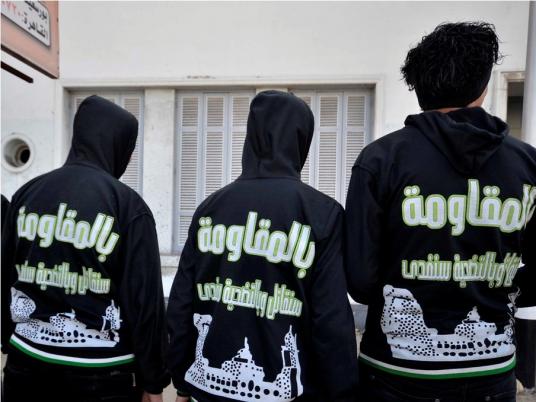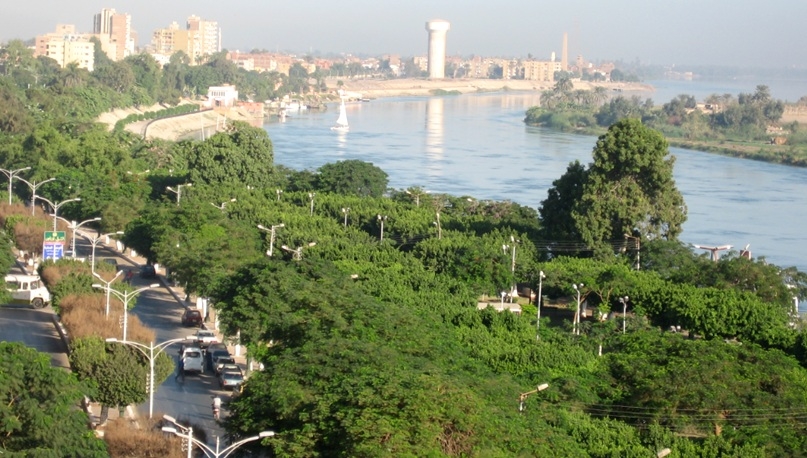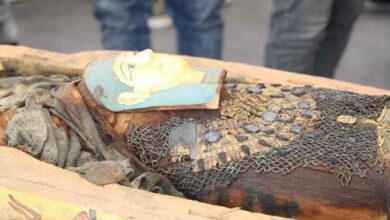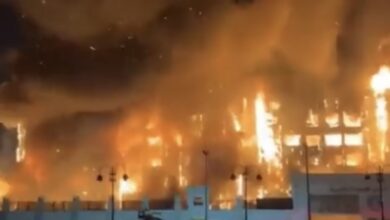
Mass marches and demonstrations took place across the governorates on Friday, which political movements have called the “Friday of Departure.”
The demonstrations demand the safeguarding of the objectives of the revolution, the dissolution of the Cabinet, the formation of a national salvation government, the amendment of controversial articles in the Constitution and trials for those responsible for killing protesters over the past weeks.
By Friday evening protests turned violent in some governorates.
At least 92 were injured in ongoing clashes between protesters and security forces in Gharbiya as of Friday evening, reported Mohamed Sharshar, deputy health minister in Gharbiya.
Protesters were injured during reported attempts to storm the Gharbiya Security Directorate headquarters in Tanta, the main police station in Kafr al-Zayat and the Mahalla City Council.
“38 were injured in Kafr al-Zayat, 35 in Tanta, and the rest in Mahalla,” Sharshar told Al-Masry Al-Youm.
A security source said that 12 alleged “rioters” were arrested in the attempts to storm the state institutions.
Anonymous masked men fired Molotov cocktails at a company belonging to a Brotherhood leader in Gharbiya's Mahalla al-Kobra City on Friday evening after a day of anti-Brotherhood protests there. There were no reported injuries, but set the company's banners on fire.
The company belonged to FJP leader Mahmoud al-Bara, said a source from the Freedom and Justice Party. He added that the fire did not reach the interior of the building.
The source said the FJP suspects Black Bloc protesters of being behind the attack, and said they would press charges.
Mohamed Sultan, head of the ambulance authority, said more than 150 were injured in protests nationwide.
Thousands took to the streets in Port Said on Friday afternoon. Four marches were organized from Mariam Mosque in the Monakh neighborhood, Sharawy Mosque in Port Fouad, Abbasy Mosque in the Arab neighborhood and a march of ultras from the Port Said Stadium.
The marches met at the intersection of Al-Ameen Street and Saad Zaghloul Street, sparking conflict between some participants.
Some ultras members demanded that certain protesters from the other marches be excluded from their demonstration, accusing them of supporting the Ultras Ahlawy and participating in their protests in Cairo.
The demonstrators split into two groups. A 6,000-person strong march made up of members of political forces chanted slogans against Morsy and the Brotherhood, while an ultras-only march followed.
Violent clashes erupted in the Gharbiya city of Mahalla early Friday evening, reported the state-run news agency MENA. Protesters allegedly pulled the gates in front of the city council apart and hurled Molotov cocktails, reportedly attempting to storm the building. Police fired tear gas into the crowd.
All traffic in the area was halted, and nearby shops were closed.
Clashes also broke out in Tanta, Gharbiya’s capital, as well as in Kafr al-Sheikh, capital of Kafr al-Sheikh Governorate. Protesters battled with security forces in front of the governorate capital buildings in both cities. Demonstrators hurled stones at security officers, who responded by firing tear gas.
Thousands began taking to the streets in Gharbiya on Friday afternoon. Demonstrators demanded the sacking of the prosecutor general, the formation of a new Cabinet, and the ouster of the governor of Gharbiya.
They chanted, "Down with the supreme guide and the Brotherhood rule," "No Brothers, no Salafis, we are the 25 youth," and "Lying Brothers should be in jail." Demonstrators held symbolic coffins to demand punishment for those responsible for the deaths of protesters, and denounced the torture of activist Mohamed al-Gendy who dwas killed in January.
In Tanta, about 3,000 protesters staged a march after Friday prayers calling for President Mohamed Morsy to step down. Revolutionary forces gathered in Al-Shoan Square in Mahalla al-Kobra City to demand retribution for the martyrs of the revolution.
In Sharqiya Governorate, hundreds of demonstrators marched through Zagazig City to protest against the Muslim Brotherhood and demand that the objectives of the revolution be met.
The three marches headed to the governorate headquarters, and some protesters then went on to demonstrate in front of Morsy’s home in Zagazig. The protesters chanted for justice for the protesters killed since 25 January, a new cabinet and a new constitution.
Fearing potential attacks, Muslim Brotherhood members formed human chains to protect its 43 headquarters in Sharqiya.
There was tightened security around all state institutions and the president's house. Ambulances were on standby near the protests.
In Damietta, marches started after Friday prayers from different mosques and headed to Al-Sa'a Square. Protesters raised banners and chanted for the dissolution of the Cabinet, the dismissal of the prosecutor general and to put the interior minister on trial.
In Fayoum, revolutionary forces and political parties staged a protest in Al-Thawra Square, and agreed to march through the city streets at 6 pm.
In Monufiya, three marches from Shebin al-Kom City headed toward the governorate headquarters after Friday prayers.
Members from around 150 political parties including the Tagammu Party, the Nasserist Party, the Wafd Party, the Ghad al-Thawra Party, the Popular Current, the April 6 Youth Movement, Kefaya and other groups participated. The protesters demanded President Mohamed Morsy’s ouster and early presidential elections.
They met in front of the Ansary, Abbasy and Abu Bakr al-Sedeeq mosques, marched through the main roads and met in front of the governorate building.
Security was intensified in front of the governorate headquarters, the Shebin al-Kom Prison and courts and other state facilities.
In Suez, the National Salvation Front and other revolutionary movements staged a protest in Arbaeen Square. They chanted slogans against the Muslim Brotherhood and demanded justice for the dozens of protesters killed in the wave of violence that started on 25 January. Protesters also chanted against the police, accusing them of murdering the protesters, and demanded the dismissal of several Suez officials.
Wafd Party leader Ali Amin said protests in Suez would continue until the demands of the revolution were achieved.
In Kafr al-Sheikh, hundreds of protesters from the Popular Current party, the Constitution Party, the Karama Party, the Kefaya movement and other political groups marched from Estad Mosque in Kafr al-Sheikh City. Demonstrators demanded the ouster of Governor Saad al-Husseiny, a former MP for the Freedom and Justice Party. The march went down the city’s main streets until it arrived at the governorate’s headquarters.
Thousands marched from Al-Qaed Ibrahim Mosque in Alexandria after Friday prayers. Participants raised flags bearing the images of protesters killed in recent clashes sparked during the anniversary of the 25 January revolution, and raised banners expressing their demands including the ouster of President Mohamed Morsy. They also raised flags in support of various political movements, including Kefaya and the Revolutionary Socialists.
Participants said the march would pass by Raml Station, Martyrs' Square in Masr Station, Abu Qir Street until they reach the Alexandria Governorate headquarters.
The April 6 Youth Movement, the Free Egyptians Party, the Kefaya movement, the Change Movement, the Leftist Youth Movement and others all announced they would take part in today’s protest in Alexandria, reported state-run Al-Ahram.
Participating forces declared they would continue their protests until the fall of the Muslim Brotherhood and President Mohamed Morsy, according to Al-Ahram. They called for a transitional justice law, the implementation of court rulings that returned privatized companies to the state, the cancellation of all laws restricting freedoms and a new law on minimum and maximum wages.
Other demands included the dismissal of the prosecutor general, the release of protesters from prisons, the rejection of the International Monetary Fund and revolutionary trials for Morsy, the interior minister, the prime minister and the heads of the security directorates where protesters were killed in violent clashes with the police.
A number of revolutionary movements and coalitions in Minya announced participating in Friday’s protests, including 25 January Youth Movement, the Revolutionary Youth Bloc and the unofficial Wafd Youth for Change Party.
The National Salvation Front in Ismailia planned four marches to Al-Mamar Square today. The first march will be from Shebeen Street, the second from Othman Ahmed Othman Square, the third from al-Hekr Street and the fourth from Mohamed Amin Mosque.
Edited translation from Al-Masry Al-Youm




